Formula C18H14N2Na2O8S2 Soluble in Water | Molar mass 496.42 g/mol Appearance Red powder | |
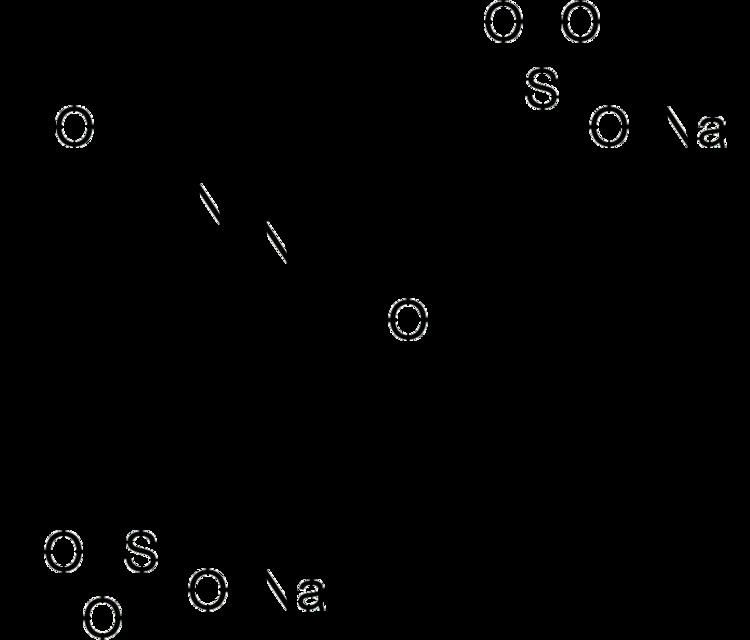 | ||
IUPAC ID disodium 6-hydroxy-5-((2-methoxy-5-methyl-4-sulfophenyl)azo)-2-naphthalenesulfonate | ||
Allura Red AC is a red azo dye that goes by several names including Allura Red, Food Red 17, C.I. 16035, and FD&C Red 40. It is used as a food dye and has the E number E129.
Contents
The compound is a derivative of naphthalene, it is dark red powder. It usually comes as a sodium salt, but can also be used as both calcium and potassium salts. These salts are soluble in water; in solution, its maximum absorbance lies at about 504 nm. Its melting point is above 300 °C (572 °F).
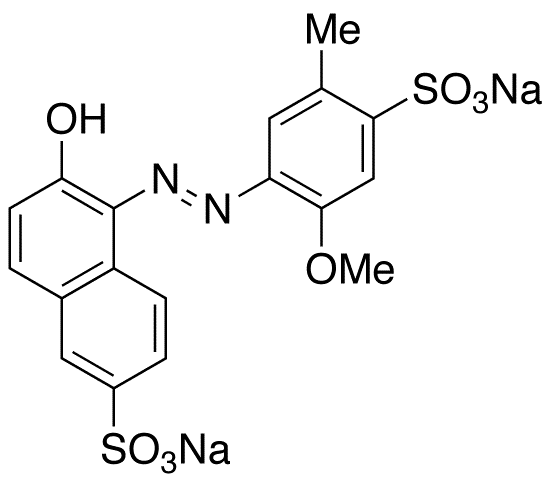
Use as food color
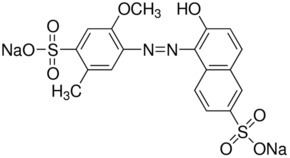
Allura Red AC is a very popular dye throughout the world. Annual production in 1980 was greater than 2.3 million kilograms.
Health effects
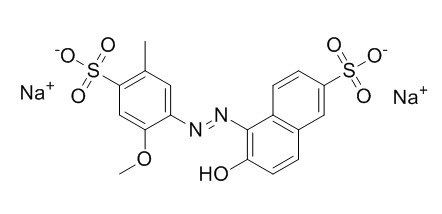
There is some evidence to support claims that certain food coloring agents may cause food intolerance and ADHD-like behavior in some children; others say that certain food coloring may act as an ADHD trigger in those who are genetically predisposed, but the evidence is weak and not supported by the U.S. Food and Drug Administration (FDA).
Regulation
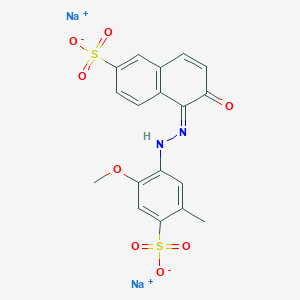
Since the 1970s and the well-publicized advocacy of Benjamin Feingold, there has been public concern that food colorings may cause ADHD-like behavior in children. These concerns have led the FDA and other food safety authorities to regularly review the scientific literature, and led the UK FSA to commission a study by researchers at Southampton University of the effect of a mixture of six food dyes (Tartrazine, Allura Red, Ponceau 4R, Quinoline Yellow WS, Sunset Yellow and Carmoisine (dubbed the "Southampton 6")) and sodium benzoate (a preservative) on children in the general population, who consumed them in beverages; the study published in 2007. The study found "a possible link between the consumption of these artificial colours and a sodium benzoate preservative and increased hyperactivity" in the children; the advisory committee to the FSA that evaluated the study also determined that because of study limitations, the results could not be extrapolated to the general population, and further testing was recommended".
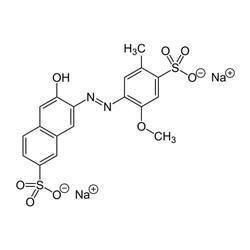
The European regulatory community, with a stronger emphasis on the precautionary principle, required labelling and temporarily reduced the acceptable daily intake (ADI) for the food colorings; the UK FSA called for voluntary withdrawal of the colorings by food manufacturers. However, in 2009 the EFSA re-evaluated the data at hand and determined that "the available scientific evidence does not substantiate a link between the color additives and behavioral effects" and in 2014 after further review of the data, the EFSA restored the prior ADI levels. In 2015, the EFSA found that the exposure estimates did not exceed the ADI of 7 mg/kg bw per day in any population.
The US FDA did not make changes following the publication of the Southampton study, but following a citizen petition filed by the Center for Science in the Public Interest in 2008, requesting the FDA ban several food additives, the FDA commenced a review of the available evidence, and still made no changes.
Allura Red AC was at one time banned in Denmark, Belgium, France and Switzerland, and was also banned in Sweden until the country joined the European Union in 1994. The European Union approves Allura Red AC as a food colorant. In Norway, it was banned between 1978 and 2001, a period in which azo dyes were only legally used in alcoholic beverages and some fish products.
In the United States, Allura Red AC is approved by the FDA for use in cosmetics, drugs, and food. When prepared as a lake it is disclosed as Red 40 Lake or Red 40 Aluminum Lake. It is used in some tattoo inks and is used in many products, such as soft drinks, children's medications, and cotton candy. It is by far the most commonly used red dye in the United States, completely replacing amaranth (Red 2) and also replacing erythrosine (Red 3) in most applications due to the potential health effects of the two dyes.
